



Abstract: Software-Defined Networking (SDN) emerged as an
attempt to introduce network innovations faster and to radically simplify and
automate the management of large networks. Most of the traditional SDN work
promoted the neat separation of the “smart” network control and management
plane from the “dumb” packet forwarding plane. However, we believe that this
rigid, physical, separation is by no means a conceptual principle, but it is
just the consequence of the inability to emerge, so far, with pragmatic
device-level programming interfaces more expressive than OpenFlow, i.e., which
permit to program and deploy inside the switch more complex and dynamic per-flow
“behavioral rules” rather than static forwarding rules. In the talk, we
discuss pragmatic and viable ways to formally describe stateful per flow
processing while retaining platform independency and portability across
different network devices and nodes. We posit that the unprecedented ability to
locally deploy, in each network switch, third-party programmed platform-agnostic
control functions, not only questions the rigid control/data plane separation
that so far has driven SDN efforts, but rather might even pave the road towards
the viable return of some “active networking” ideas in the SDN arena.
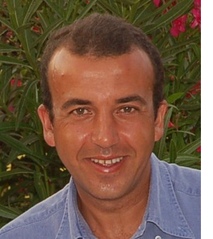 Biography: Giuseppe Bianchi is Full
Professor of Networking at the School of Engineering, University of Roma Tor
Vergata since January 2007, and member of the CNIT executive board since
2014. His research activity includes programmable network systems, wireless
networks, privacy and security, traffic control, and is documented in about
200 peer-reviewed international journal and conference papers, having received
more than 12.000 citations (source scholar.google.com). He has carried out
pioneering research work on WLAN modelling and assessment, and is currently
interested in network programmability in both wireless and wired domains. He has
been general or technical co-chair for several major conferences and workshops
(IEEE INFOCOM 2014, ACM CoNext 2015, IEEE LANMAN 2016, IEEE WoWMoM 2007 and
2010, ACM WinTech 2011, ACM SRIF 2013, track chair at IEEE PIMRC 2008, etc). G.
Bianchi has held general or technical coordination roles in several European
projects (FP6-DISCREET, FP7-FLAVIA, FP7-PRISM, FP7-DEMONS, H2020-BEBA,
H2020-SCISSOR). He has been (or still is) editor for top journals in his field,
including IEEE/ACM Transactions on Networking and IEEE Transactions on Wireless
Communications.
Biography: Giuseppe Bianchi is Full
Professor of Networking at the School of Engineering, University of Roma Tor
Vergata since January 2007, and member of the CNIT executive board since
2014. His research activity includes programmable network systems, wireless
networks, privacy and security, traffic control, and is documented in about
200 peer-reviewed international journal and conference papers, having received
more than 12.000 citations (source scholar.google.com). He has carried out
pioneering research work on WLAN modelling and assessment, and is currently
interested in network programmability in both wireless and wired domains. He has
been general or technical co-chair for several major conferences and workshops
(IEEE INFOCOM 2014, ACM CoNext 2015, IEEE LANMAN 2016, IEEE WoWMoM 2007 and
2010, ACM WinTech 2011, ACM SRIF 2013, track chair at IEEE PIMRC 2008, etc). G.
Bianchi has held general or technical coordination roles in several European
projects (FP6-DISCREET, FP7-FLAVIA, FP7-PRISM, FP7-DEMONS, H2020-BEBA,
H2020-SCISSOR). He has been (or still is) editor for top journals in his field,
including IEEE/ACM Transactions on Networking and IEEE Transactions on Wireless
Communications.
Abstract: According to some media channels Robotics will heavily impact our future and we will soon face an enormous growth in numbers of robots in our everyday life: humans would be replaced by robots in jobs, in driving cars, in assisting elderly relatives, etc. On the other hand, immediately after recent disasters, Robotics was disappointingly unable to provide systems to operate effectively and efficiently in real scenarios and assist humans in performing hazardous tasks. Appropriate physical power, agility and robustness, manipulation and locomotion capability, and ability to physically interact with a harsh environment are some of the characteristics required to the new generation of robots. Moreover, humans usually perform heavy tasks by using their legs, arms, head and trunk in a coordinated whole-body movement producing locomotion and manipulation while keeping equilibrium. This suggests that the new generation of robots must be able to replicate such abilities, which poses new problems on the modelling and control side. With these motivations the Walk-Man humanoid robot has recently been developed in Italy. The robot has already participated to the DARPA Robotics Challenge in 2015 and will soon be tested on tasks defined in collaboration with the Italian “Civil Protection” in assisting operators in hazardous environments. After an overview of the Walk-Man humanoid platform the talk mainly focuses on the challenges and proposed solutions in planning and control for robust whole-body loco-manipulation tasks. Planning algorithms for dynamical systems are known to be PSPACE-hard in the number of degrees of freedom, and the complexity of complete algorithms for whole-body locomotion would far exceed current technological capabilities. For these reasons development of unconventional planning and control algorithms is required.
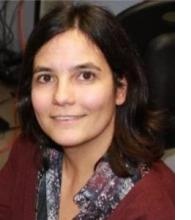 Biography: Lucia Pallottino is currently
Associate Professor at the Centro „E. Piaggio“ and the Dipartimento di
Ingegneria dell'Informazione at the University of Pisa. She received the
„Laurea“ degree in Math from the Department of Mathematics in the University
of Pisa in 1998. She got a Doctoral degree in Robotics and Industrial
Automation at Centro „E. Piaggio“ at the Faculty of Engineering, in January
2002. She has been Associate Professor from 2007 to 2015. She has been
Visiting Scholar at M.I.T. (2000–2001) in the Laboratory for Information and
Decision Systems (LIDS ). She has been Visiting Researcher at UCLA, (2004) in
the Mechanical and Aerospace Engineering Department (MAE ). She is Chair of the
IEEE Robotics & Automation Society Italian Chapter (I-RAS) (since Jan. 2015)
and Associate Editor of the IEEE Transaction on Robotics and of the
International Journal of Advanced Robotic Systems. Her main research interests
within Robotics are in motion planning and control for humanoid robots and for
multiple nonholonomic vehicles, optimal control of constrained systems,
distributed control of multi–robot vehicles and quantised control. Lucia has
published more than 60 papers in international journals and conferences (Google
scholar h–index=14, Scopus h-index =12). Lucia has served IEEE (CASE, ICRA,
IVS, IROS, ARMS, IRAM, SAC) as a Program Committee member and was a co-chair of
the Technical Program Committee of CONET2012 workshop. She is also external
reviewer for research projects such as the Portuguese Foundation for Science and
Technology (FCT) in the Computer Sciences and Engineering field, the Natural
Sciences and Engineering Research Council of Canada (NSERC) for “Discovery
Grant” research projects and the Fund for Scientific Research (F.R.S.-FNRS) in
Brussels.
Biography: Lucia Pallottino is currently
Associate Professor at the Centro „E. Piaggio“ and the Dipartimento di
Ingegneria dell'Informazione at the University of Pisa. She received the
„Laurea“ degree in Math from the Department of Mathematics in the University
of Pisa in 1998. She got a Doctoral degree in Robotics and Industrial
Automation at Centro „E. Piaggio“ at the Faculty of Engineering, in January
2002. She has been Associate Professor from 2007 to 2015. She has been
Visiting Scholar at M.I.T. (2000–2001) in the Laboratory for Information and
Decision Systems (LIDS ). She has been Visiting Researcher at UCLA, (2004) in
the Mechanical and Aerospace Engineering Department (MAE ). She is Chair of the
IEEE Robotics & Automation Society Italian Chapter (I-RAS) (since Jan. 2015)
and Associate Editor of the IEEE Transaction on Robotics and of the
International Journal of Advanced Robotic Systems. Her main research interests
within Robotics are in motion planning and control for humanoid robots and for
multiple nonholonomic vehicles, optimal control of constrained systems,
distributed control of multi–robot vehicles and quantised control. Lucia has
published more than 60 papers in international journals and conferences (Google
scholar h–index=14, Scopus h-index =12). Lucia has served IEEE (CASE, ICRA,
IVS, IROS, ARMS, IRAM, SAC) as a Program Committee member and was a co-chair of
the Technical Program Committee of CONET2012 workshop. She is also external
reviewer for research projects such as the Portuguese Foundation for Science and
Technology (FCT) in the Computer Sciences and Engineering field, the Natural
Sciences and Engineering Research Council of Canada (NSERC) for “Discovery
Grant” research projects and the Fund for Scientific Research (F.R.S.-FNRS) in
Brussels.
Abstract: The first LTE release (3GPP Release 8) was presented in 2009. Later, in December 2009, first commercial LTE networks were launched in Stockholm and Oslo. The initial version of LTE provides up to 150 Mbps in downlink and up to 50 Mbps in uplink. Now there are more than 500 LTE networks worldwide and more than 700 operators investing in LTE in 194 countries (according to GSA data).
Once the first LTE release was published a number of enhancements and huge changes were developed, standardized and implemented. The first big jump (mostly from available peak data rates and efficiency on radio interface point of view) was done within Release 10 and LTE got ‘Advanced’ postfix. Further LTE-Advanced evolution was performed within Release 11 and Release 12. Starting from Release 13 LTE-Advanced Pro appears with enhancements and extensions for Internet of Things (IoT), Public Safety, Carrier Aggregation, coexistence and interworking with WiFi networks and for a number of other areas. LTE is already on its path to 5G. 3GPP Release 15 should be the first version of global 5G standard with new defined radio interface.
During a key note LTE evolution starting from 3GPP Release 8 to 3GPP Release 14 (from LTE to LTE-Advanced Pro) is presented with focus on key features introduced in each release and its characteristics. Then 5G requirements and key design aspects are considered including new challenges and possible deployment schemes. At the end there is additional information about 5G ongoing activities.
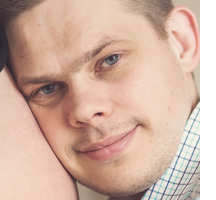 Biography: Alexey Anisimov was born on
June 23, 1985. In 2007 he graduated from Saint Petersburg State University of
Aerospace Instrumentation (SUAI). In 2011, he received Ph.D. where his primary
focus was on power management solutions for mobile terminals in wireless
networks, on time data delivery and traffic modeling.
Biography: Alexey Anisimov was born on
June 23, 1985. In 2007 he graduated from Saint Petersburg State University of
Aerospace Instrumentation (SUAI). In 2011, he received Ph.D. where his primary
focus was on power management solutions for mobile terminals in wireless
networks, on time data delivery and traffic modeling.
Starting from 2006, he worked for Motorola at Saint-Petersburg software center. That time he was a part of WiMAX development team and customer support team. Since 2011 he has worked for Nokia Siemens Networks (now Nokia) and his primary technology is Long Term Evolution (LTE) and LTE-Advanced. Currently he takes Project Manager position in Nokia Mobile Networks CTO organization. His team works on forward looking innovation projects within LTE-A Pro and 5G domains and develops customer demos, trials and trade fair demos. The team provided the following demos Coordinated Multipoint (CoMP), evolved Multimedia Broadcast Multicast Services (eMBMS), high throughput demos, LTE WiFi Aggregation (LWA), Dual Connectivity (DC) and a number of others.
His research interests include simulations, spectral efficiency, video delivery, QoS, traffic management and performance analysis in wireless networks.
Abstract: In the first part of this presentation I review the key technology developments of the last century up to the present. These developments are what led us to the Communication and Information revolution. This is followed by a discussion of how the use of optical fibers brought about the fusion of these two elements and the resultant proliferation of smart phones and social networks.
In the second part, the author recollects some of his work in fiber optics over a period of forty years in the context of those key developments. In particular, I stress what it takes for a company small in comparison to the giants in the field to capture niche markets. I also discuss the criteria that are needed to justify the application of a new technology like optical fibers to existing communication and sensing systems, and make it cost effective.
I end this talk with a few personal considerations regarding technnology developments and innovation.
 Biography: Henri Hodara has had a long and
prolific career as technologist, business executive and entrepreneur. He
co-founded Tetra Tech in 1966 and became its president in 1983. Under his
leadership, the company’s revenues reached $80 million in 1985.
Biography: Henri Hodara has had a long and
prolific career as technologist, business executive and entrepreneur. He
co-founded Tetra Tech in 1966 and became its president in 1983. Under his
leadership, the company’s revenues reached $80 million in 1985.
Later, he formed another company that he sold to L-3 Communications. That company, L-3 PHOTONICS, grew at the phenomenal rate of 25% a year until Henri’s retirement in 2011, when he formed Symbioptix, his current company. Although the features of all these companies were and are multidisciplinary, one field of special interest has been Fiber Optics. In addition to his executive duties, Henri has continued to work and contribute technically in this area.
Henri earned a BS from the Massachusetts Institute of Technology and an MS from Stanford University. Several years later, he earned his PhD from the Illinois Institute of Technology in a record four years, while working full time as Associate Director of Research and Development for the Hallicrafters Company in Chicago, Ill. Henri has published extensively in peer review journals. He holds many patents in the field of laser and fiber optics. He has taught short courses in fiber and integrated optics for the U.S. government and for telecommunications customers in the U.S. and abroad. He is the founder and editor-in-chief of Fiber & Integrated Optics, a bimonthly international journal. In addition, he served for eleven years as the U.S. representative for Electro-Optics in the NATO/AGARD Electromagnetic Propagation Panel.
October 30, 2016: The ICUMT 2016 photos are available on the Official Facebook page of the congress.
October 10, 2016: The ICUMT 2016 Organizing committee is pleased to announce two Invited industrial talks which will be given by Dr. Alexey Anisimov and Dr. Henri Hodara. More details can be found in the Keynotes section.
October 4, 2016: Tentative technical program for the ICUMT 2016 congress and collocated workshops is available here
September 15, 2016: We are happy to announce that the Invited talk on Control Systems, Automation and Robotics will be delivered by Prof. Lucia Pallottino from University of Pisa. More details about the keynote „Challenges in Robotics to face the new era“ are available here.
August 25, 2016: Due to numerous requests, the ICUMT 2016 Organizing Committee decided to extend the deadlines for Final Paper Submission and Authors' Registration and Payment. Please check the Important dates section.
August 17, 2016: The ICUMT 2016 registration has been opened. Please use this link to register your paper and proceed with the payment.
August 16, 2016: The review process of the ICUMT 2016 papers (main tracks) is successfully finished. The ICUMT Organizing Committee is thankful to all reviewers for their careful evaluation. The notifications of paper acceptance/rejection have been sent to authors via email. The paper status including the reviews can be found in the EDAS as well.
June 24, 2016: Due to numerous requests, the ICUMT 2016 Organizing Committee decided to extend the deadline for Regular Paper Submissions until July 5. It is final deadline, no additional extension will be provided.
June 9, 2016: The deadline for Regular Paper Submissions is extended until June 24.
June 3, 2016: We are happy to announce that the First Workshop on THz Communications (THZCOM 2016) will be part of the ICUMT 2016 Congress. More details can be found here.
May 6, 2016: The opening keynote Data Plane programmability: the next step in Software Defined Networking will be given by Giuseppe Bianchi – Full Professor at University of Roma Tor Vergata.
March 30, 2016: The deadline for the ICUMT 2016 workshop proposals was extended until April 30, 2016.
March 2, 2016: The ICUMT 2016 will include also practical tutorials. The first confirmed tutorial is „Candidate Multicarrier Waveforms for Future 5G Communication Systems“. The tutorial will be provided to ICUMT 2016 participants for free with the full registration fee. More details can be found here.
February 9, 2016: The technical co-sponsorship by IEEE Region 8 and IEEE Portugal Section has been fully approved.
February 1, 2016: The ICUMT 2015 Proceedings has been indexed by IEEE Xplore Online Database.
January 27, 2016: Please submit your papers in EDAS!
December 22, 2015: ICUMT 2016 websites launched!
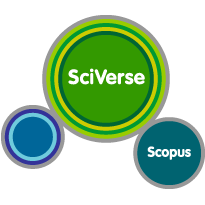 |
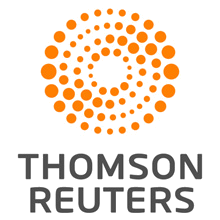 |
Deadline for Workshop Proposal: March 31, 2016 April 30, 2016 (hard deadline)
Deadline for Regular Paper Submission: June 10, 2016 July 5, 2016
Notification of Paper Acceptance: August 12, 2016 August 16, 2016
Final Paper Submission: August 26, 2016 September 5, 2016
Authors' Early Registration and Payment: August 26, 2016 September 10, 2016
Authors' Late Registration and Payment: September 9, 2016 September 20, 2016